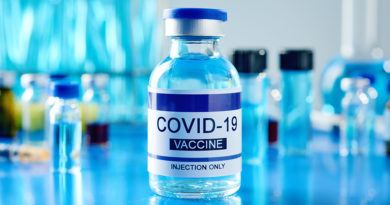How COVID-19 anti-vaccine campaigns differ from the usual anti-vax disinformation

NEW YORK: A study conducted by early warning risk intelligence company Crisp shows anti-vaxxers are strategically spreading disinformation about COVID-19 vaccines, specifically by attacking pharmaceutical brands.
With the number of COVID-19 cases topping 25 million this week, pharma brands are facing another enemy: vaccine disinformation mentioning their brands.
A study conducted by Crisp, a company that has tracked terrorist groups and child exploitation activity online, revealed that anti-vaccination groups are launching specific disinformation campaigns targeting the coronavirus vaccines.
Adam Hildreth, CEO of Crisp, said the false information spreading online about coronavirus vaccines is different than the usual anti-vax chatter his company has monitored, as the intent is to deliberately harm public health.
“We always had anti-vax content that was driven by general consumers who had beliefs that vaccination is wrong,” said Hildreth. “But one of the really worrying things is we’re now seeing brand-specific attacks, whereby they’re not just saying vaccinations are bad; they’re calling it out from a corporate perspective.”
Brands that have produced COVID-19 vaccines such as Pfizer and Moderna are facing targeted campaigns from people who want to discredit them via bad online reviews or falsehoods about vaccine ingredients or other conspiracies.
“Unfortunately, the way that this information spreads is the wilder the claim, the easier it is to share because it’s more interesting,” Hildreth said.
Conspiracy groups have used private social channels such as WhatsApp, Parler and 4chan to recruit followers and coordinate, creating playbooks on how to effectively spread disinformation, he added.
While false information spreads on Big Tech channels such as Twitter, Facebook and Instagram, Hildreth says these platforms are not always where they originate. The study found that most disinformation campaigns begin on alt tech, a group of social media platforms or internet service providers that position themselves as alternatives to the mainstream platforms. Some, including Gab and Bitchute, spread false information under the guise of being “free speech” platforms.
“[People] go after Big Tech, and that might be the final place it ends up, but it’s almost too late when it’s there,” Hildreth noted.
He contends that it’s the responsibility of the government to guide platforms on the removal of content. But for now, brands and agencies should combat disinformation by evaluating which narratives are most harmful to public trust and counterprogram them, Hildreth said.
“The critical bit for [governments and brands] to understand is how to prioritize what to go after and how to put out counter narratives,” Hildreth said, adding that it is not always necessary to address every single conspiracy that emerges, as some do not have an impact on whether people get vaccinated.
“The best [approach] we’ve seen so far is taking an influencer, whether it’s a celebrity, someone [people] look up to or even politicians, to be honest and show them get vaccinated,” Hildreth said. “As long as [the influencer] is in that same demographic, or they’ve got the same beliefs, showing that they’re quite happy to have [the vaccine] seems to be working the best so far.”
Other approaches include public education campaigns to debunk any false information, he added.
The survey queried 100 pharmaceutical company vigilance and drug safety professionals in the U.S. who have social media compliance with the Food and Drug Administration, European Medicines Agency or other HIPAA regulations as part of their job responsibility. The company they work for must also engage on social media or conduct social media advertising. The research was conducted in Q4 2020 and updated this month.
*** This article has been archived for your research. The original version from PR Week can be found here ***


